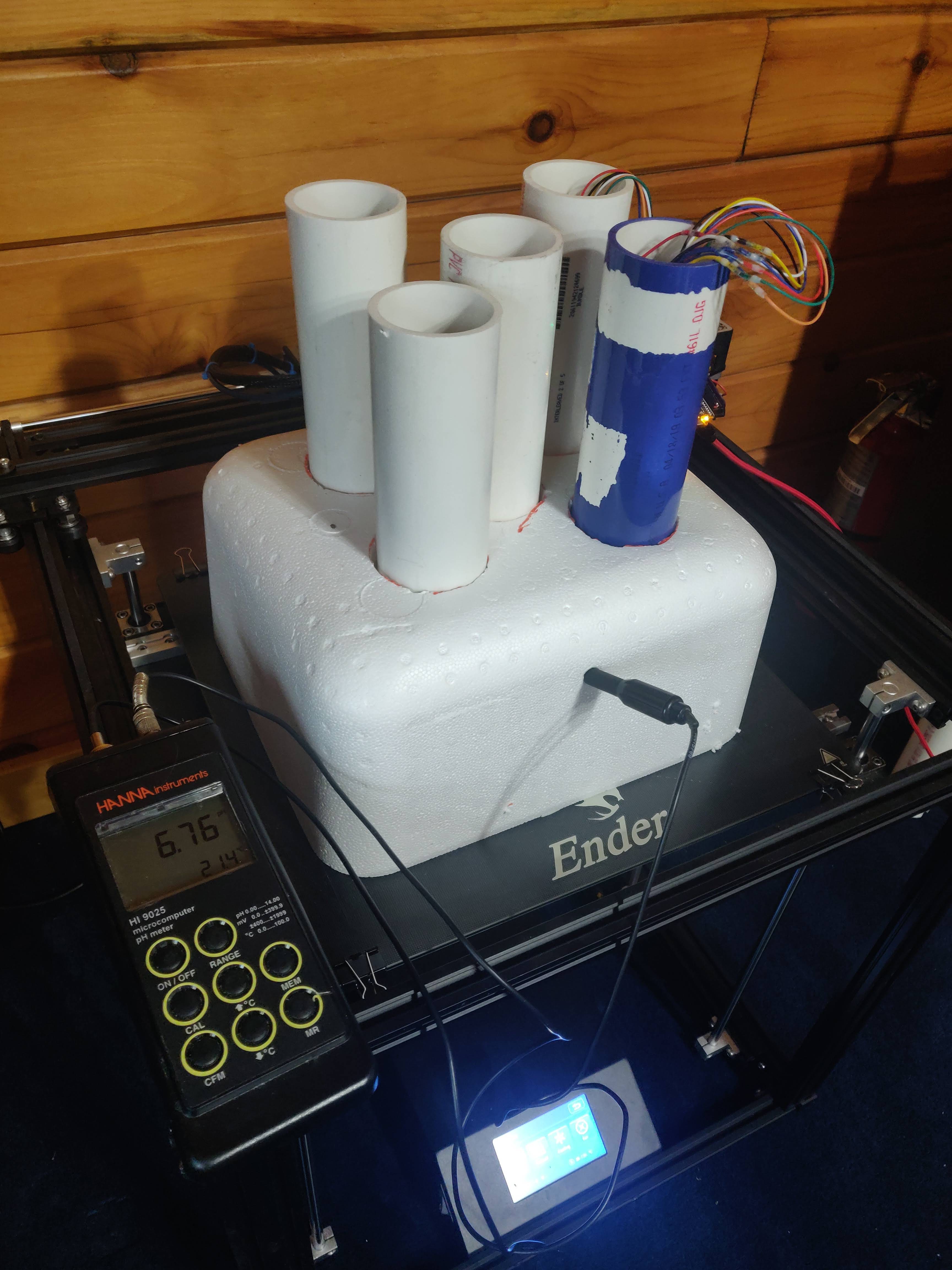One of the biggest challenges with the OpenCTD and any DIY sensor platform is calibration. But not all calibration. Depth is actually dead simple to calibrate, because the absolute pressure sensor we use is self-calibrating. Temperature can be done using known standard temperatures, accurate temperature gauges in the range we need are readily available, and, in a pinch, you can use known temperatures like boiling and freezing points.
But salinity, which is a function of conductivity, temperature, and depth, is a beast.
You could mixed your own salinity standards, or bootstrap off of other instruments, but the easiest way to calibrate salinity is to use standard solutions. They're not too expensive and they're readily available, but they are only standard at a set temperature (usually 25C). So you need to either compensate for the temperature of your workshop (which only works if that temperature is stable throughout a calibration cycle) or create a thermal chamber that holds constant temperature.

So, of course, because we're hardware hackers, the solution was obvious. Our 3D printer's heated bed does a great job holding temperature, so we rigged up an old cooler and some concrete cups (not shown, but they're in the cooler), and let everything equilibrate to 25C. Somehow, this rig does an excellent job holding temperature. I've left it sitting over several days when I'm calibrating multiple CTDs.
Work with what you've got.
 andrew.david.thaler
andrew.david.thaler
Discussions
Become a Hackaday.io Member
Create an account to leave a comment. Already have an account? Log In.